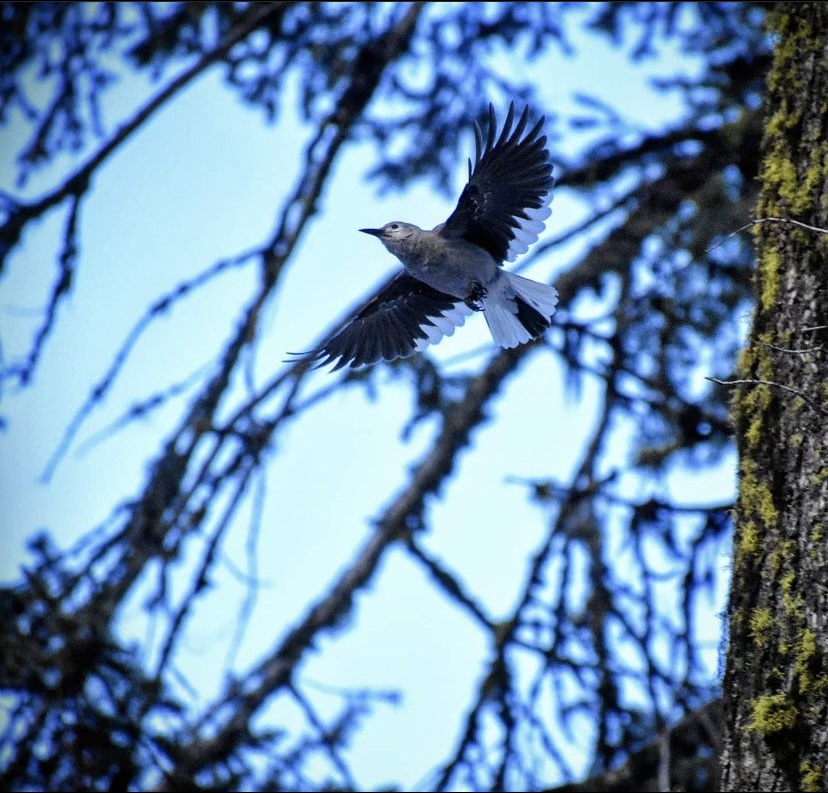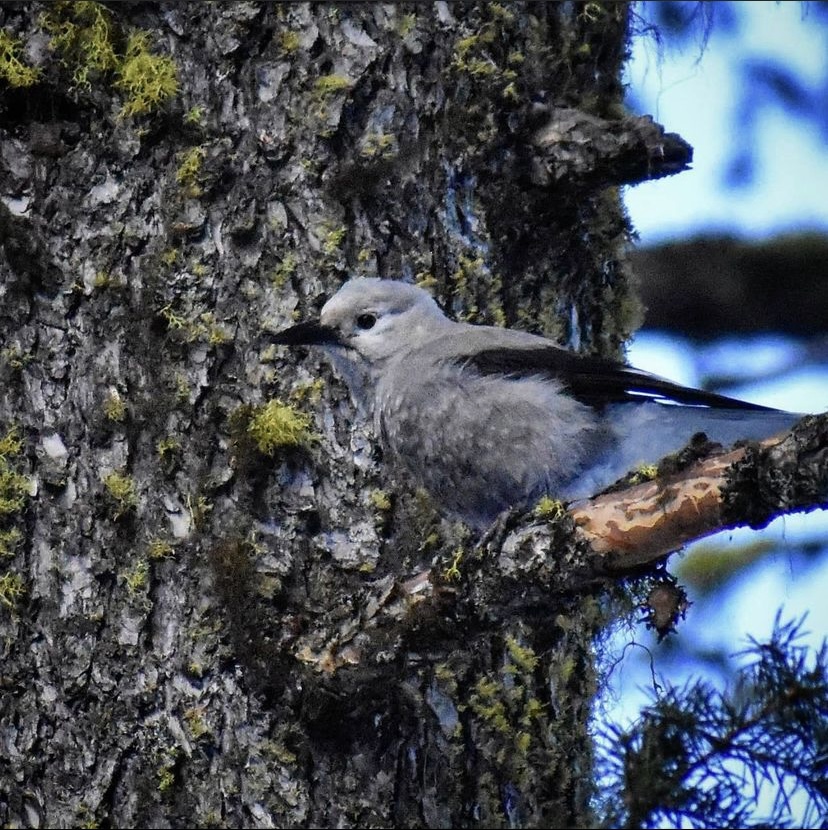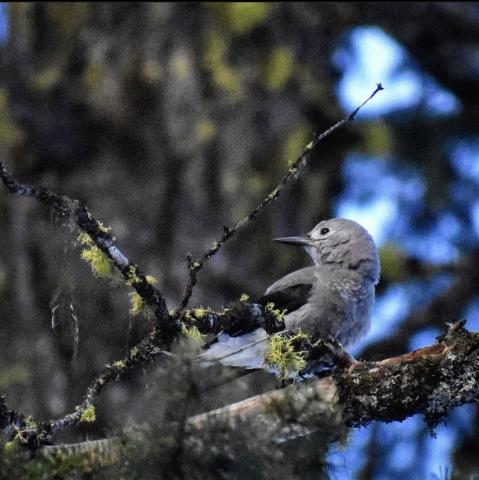Hey there, MOSSers!
It has been a while since we have updated our MOSS Adventure Learning site! While we are excited to once again be teaching students in Ponderosa State Park in our MOSS programs, we miss the opportunity to connect with our larger global community! I'm excited to share some of my new learnings with you from the past couple of months.
This year, I've had the privilege to get to learn alongside classmates as I've investigated how wildlife are affected by climate change. It's been exciting to see how different plants and animals may adapt in the face of challenges, and I've felt empowered to help people who can conserve species that are most important in our ecosystems.
I've created an Activity Guide so you all can explore some of these concepts and how they apply to your own place! Follow along if you'd like! I've also described more of my learnings below. Enjoy!
Click here for the Exploring Bird Habitats Activity Guide

One important bird species in Idaho is the Clark's nutcracker. These birds look like what some people call "gray jays" (see photo above) and live in high-elevation pine forests. We see them quite a bit in the winter in Ponderosa State Park. At high elevations, the birds eat and bury Whitebark pine seeds in the soil so they can come back and eat them later. This is called "caching." Sometimes those seeds can germinate and grow into new trees if the birds forget where they stored them. Therefore, the trees depend on the birds for survival. This is called "mutualism" because each species relies on the other for parts of its habitat.
Unfortunately, Clark's nutcrackers are in peril because of climate change. Climate warming will likely greatly impact Clark’s nutcrackers' habitat because the trees that provide their food will not be able to adapt well to warmer, drier conditions. Increased forest diseases and mountain pine beetle infestation, increased fire severity, and lower snow accumulations are all likely in high-elevation environments in Idaho, and Whitebark pines are projected to die in great numbers over the next hundred or so years.
While Clark's nutcrackers depend on high density cone crops (aka- A LOT of cones) to survive and breed, they have been found to use other types of tree seeds as food when they can't find enough Whitebark pine cones. They will eat seeds from the cones of Ponderosa pines and Douglas firs when needed. That's likely why we've seen so many Clark's nutcrackers on the Ponderosa pine trees in Ponderosa State Park in the winter each year! So even though Whitebark pines are declining in Idaho, Clark's nutcrackers might be able to adapt in a changing climate if they have some help. Their food sources need to be conserved and restored, and we need to help reduce overall greenhouse gas emissions so that the birds have a chance to adapt without the climate changing too quickly.
Will you pledge to help conserve Clark's nutcracker habitat to help these birds survive into the future? It will take a lot of us working together to make a difference, and I know we MOSSers share a love and curiosity of the world around us that can make the world a better place.
I hope to check back in again soon!
Sincerely,
Miss Beth
All photos courtesy of Kate Kohut, MNR '21.

Sources used for research:
The Audubon Society. 2021. Clark’s Nutcracker Nucifraga columbiana. In: Guide to North American Birds. [Online]. Available: https://www.audubon.org/field-guide/bird/Clark’s-nutcracker. [2021, October 7].
Barringer, L.E., D.F. Tomabck, M.B. Wunder, and S.T. McKinney. 2012. Whitebark Pine Stand Condition, Tree Abundance, and Cone Production as Predictors of Visitation by Clark’s Nutcracker. PLoS ONE, 7:1-11.
DeSante, D.F., and J.F. Saracco. 2021. Climate variation drives dynamics and productivity of a subalpine breeding bird community. Ornithological Applications, 123:1-16.
Gergel, D.R., B. Nijssen, J.T. Abatzoglou, D.P. Lettenmaier, and M.R. Stumbaugh. 2017. Effects of climate change on snowpack and fire potential in the western USA. Climatic Change, 141:287-299.
Klos, Z.P., T.E. Link, and J.T. Abatzoglou. 2014. Extent of the rain-snow transition zone in the western U.S. under historic and projected climate. Geophysical Research Letters, 41:4560-4568.
Lorenz, T.J., K.A. Sullivan, A.V. Bakian, and C.A. Aubry. 2011. Cache-site selection in Clark’s nutcracker (Nucifraga columbiana). The Auk, 128:237-247.
McLane, A.J., C. Semeniuk, G.J. McDermid, D.F. Tomback, T. Lorenz, and D. Marceau. 2017. Energentic behavioural-strategy prioritization of Clark’s nutcrackers in Whitebark pine communities: An agent-based modeling approach. Ecological Modelling, 354:123-139.
McMurray, N.E. 2008. Nucifraga columbiana. In: Fire Effects Information System, [Online]. U.S. Department of Agriculture, Forest Service, Rocky Mountain Research Station, Fire Sciences Laboratory (Producer). Available: www.fs.fed.us/database/feis/animals/bird/nuco/all.html [2021, October 7].
Schaming, T.D. 2016. Clark’s Nutcracker Breeding Season Space Use and Foraging Behavior. PLoS ONE 11:1-20.
Schaming, T.D. and C.S. Sutherland. 2020. Landscape- and local-scale habitat influences on occurrence and detection probability of Clark’s nutcrackers: Implications for conservation. PLoS ONE, 15:1-22.
Williams, T.J., D.F. Tomback, N. Grevstad, and K. Broms. 2020. Temporal and energetic drivers of seed resource use by Clark’s nutcracker, keystone seed disperser of coniferous forests. Ecosphere, 11:1-21.
